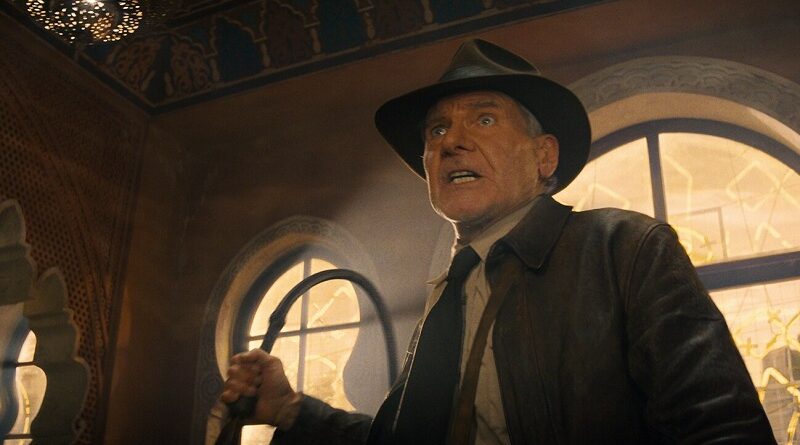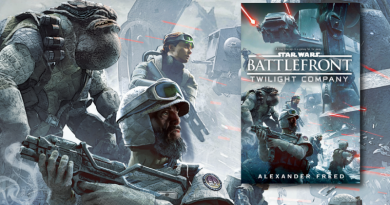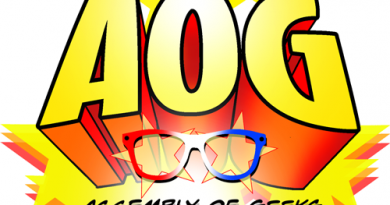Review: Indiana Jones and the Dial of Destiny
WARNING: This review contains SPOILERS for Indiana Jones and the Dial of Destiny.
After Indiana Jones and the Kingdom of the Crystal Skull in 2008, remarks from the key participants in the franchise indicated genuine interest in producing a fifth installment, and much sooner than the nineteen years elapsed since the end of the original trilogy. Within a few years, however, George Lucas had accepted Bob Iger’s suggestion to sell Lucasfilm to Disney – and Lucas, Kathleen Kennedy, and Disney leadership rightly prioritized Episode VII as the launching pad for new Star Wars movies, including Harrison Ford reprising the role of Han Solo. Multiple writers reportedly generated several Indiana Jones screenplays while Lucasfilm released five Star Wars films in five years. Early in the pandemic, James Mangold began work on the screenplay that ultimately became Indiana Jones and the Dial of Destiny, finally releasing fifteen years after Crystal Skull.

The best feature of Dial of Destiny is the actors and their performances. Ford was clearly genuinely committed to delivering a masterful portrayal of Indy, upping his game from Crystal Skull (and, for that matter, The Force Awakens). While Indy still has his trademark wit, bravado, and reckless improvisation, he also has a gravitas that reflects the weight (and loss) of the passing years. Phoebe Waller-Bridge excels as Indy’s goddaughter Helena, convincingly shifting through the beats of her character arc. Dial of Destiny demonstrates how much her talents were wasted behind a motion-capture droid in Solo, compounded by fridging L3 so she cannot return in future Star Wars films. The Indy-Helena banter is great fun, but Ford and Waller-Bridge also bring sincerity to the movie’s two most emotional conversations. Mads Mikkelsen, too, has a better-written character to play in Dial of Destiny compared to Rogue One, notwithstanding Voller’s certitude in serving an evil empire compared to Erso’s crisis of conscience. The supporting cast is uniformly excellent, as well, especially considering that most of them were not born when Raider of the Lost Ark was released, much less in 1969 when Dial of Destiny takes place.
The plot is linear and straightforward, like its Indiana Jones predecessors, but the runtime could have been trimmed by at least twenty minutes. Each of the major action set-pieces goes on too long; cutting just three minutes from each would have saved fifteen minutes. The opening flashback in the castle and on the train is particularly in need of shortening, paring down the action for action’s sake to retain the key moments of exposition and characterization. Notably, the later flashback to Basil’s home, with Indy retrieving the artifact to try to break his friend’s obsession and establishing its effect on young Helena, conveyed more powerful characterization elements than the wartime sequence. The money spent on deepfake de-aging would have been better served reducing the minutes dedicated to an action scene a middle-aged Ford would have filmed with his own unedited face four decades earlier, and lengthening the time devoted to familial and personal dramatic stakes. Doing so also would have greatly enhanced the emotional impact of the moment when Indy and Helena share a mutual recognition of their individual dedications to their fathers’ respective historical artifact obsessions.
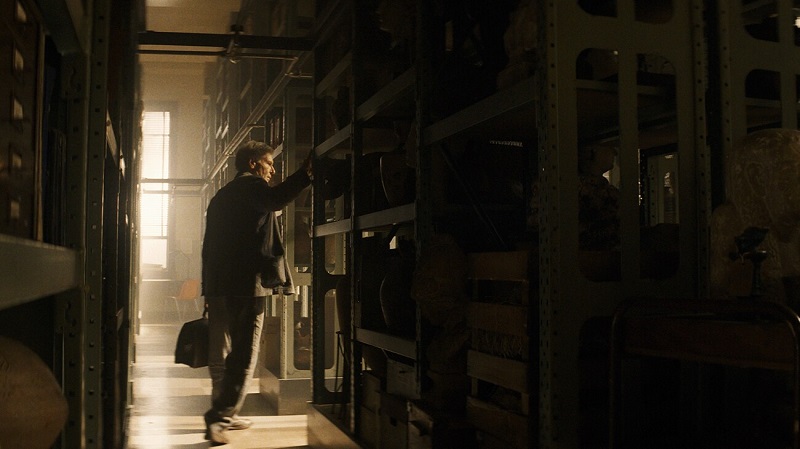
Every Indiana Jones movie has its wacky moments, and so does Dial of Destiny. Teddy flying a second plane through the time fissure simply to provide our protagonists a way to get home again, though, is needlessly contrived. Surely a more elegant solution would have presented itself during nearly three years of production. Similarly, the epilogue inexplicably fails to address the prominent early plot point – one that leads Indy to knock out a literal innocent bystander who has the misfortune of recognizing him on the sidewalk – that Indy was the subject (wrongly) of a police bulletin as a murder suspect at the time he left New York for Tangiers. Moreover, the others involved in the incident at Hunter College are dead – and most of their corpses ended up marooned in ancient Syracuse. In that context, Indy and Helena cannot readily exonerate themselves, yet nothing is said about the matter at all.
The biggest weakness in Dial of Destiny is its repetition of the greatest flaws of the Star Wars Sequel Trilogy, despite going into production when Lucasfilm had plenty of opportunity to have learned from the fan reactions and insightful criticism of those films. Dial of Destiny doubles down on one of the worst-received elements of The Force Awakens: the estrangement of Han and Leia and the regression of Han’s characterization. Referring to Marion, Indy even has a line of dialogue nearly verbatim to Han’s line to Maz Kanata about Leia. Dial of Destiny also repeats the gruff reluctant mentor and the eager, rebuffed, but persistent mentee dynamic from The Last Jedi, with Indy for Luke and Helena for Rey. Both instances are a noticeable contrast to The Empire Strikes Back and Attack of the Clones, where an implacable (if frustrated) mentor struggles to rein in an impatient (if earnest) apprentice in a tutelage that varies from humorous to emotionally tense, but avoids condescension or acrimony. Finally, paralleling The Rise of Skywalker, in Dial of Destiny we learn that somehow the Nazis have returned. The connection to the space program and Operation Paperclip are peripheral at best to the plot and characterizations; it is a pretext to bring back the previously defeated foe.
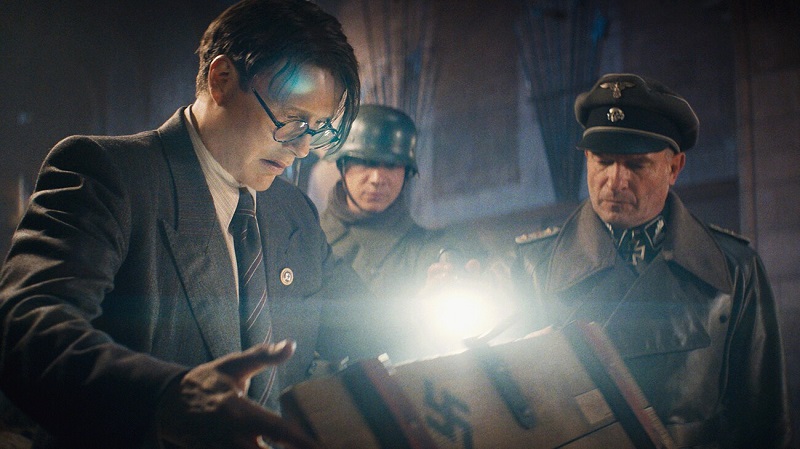
Most of all, Dial of Destiny falls into the same trap as The Force Awakens and The Last Jedi, leaning too heavily on nostalgia, homage, and pastiche rather than bringing something new to the table. Despite its production four decades later, Dial of Destiny makes no real effort to address criticisms of exoticism and Orientalism that have been raised about the franchise. Among the Dial of Destiny’s major sequences, most of them are functionally duplicates of previous set-pieces from the original trilogy films of the 1980s: captivity and escape from a Nazi castle; fighting Nazis on a moving ground vehicle; lecturing to a college auditorium; a tense showdown with adversaries around a table; a street chase through a North African city; exploring the tomb of an important historical figure; fighting Nazis aboard an airborne vessel; parachuting away to escape certain death in an impending crash; a twentieth-century Indy getting to speak in person to a man from centuries past. A few sequences are new to the franchise: pursuit and combat within the college archive; escaping through a ticker-tape parade and subway; scuba-diving to a sunken ancient shipwreck; observing the Roman siege of Syracuse.
While Crystal Skull has its own flaws, at least that film committed to the 1957 setting. Its story and world-building hinge upon elements such as the atomic bomb, Soviet adversaries and American anticommunist paranoia, and conspiracy theories about UFOs and aliens. In Dial of Destiny, by contrast, the moon landing and Vietnam War are tangential, not core to the film like the Cold War in Crytal Skull. Even Mutt’s fate comes across as a convenient way to write him out of the story (and undermine Indy’s and Marion’s marriage), hardly conveying more impact than if he had died in a motorcycle wreck. An Indiana Jones movie set in 1969 should have pushed forward the social, political, and geopolitical changes introduced to the franchise in Crystal Skull, which would have further reinforced Dial of Destiny’s theme of Indy as a man feeling out of place in his time. Perhaps, even, the film could have linked up to Lucas’ original inspirations for The Star Wars and used Richard Nixon as the villain.
Indiana Jones and the Dial of Destiny is playing in theaters now, and will arrive on Disney+ at a future date.
- BJ Priester Talks The Acolyte Episode 6 on Who’s the Bossk? - July 7, 2024
- Dave Filoni Talks Writing AHSOKA and Guiding the Future of Star Wars Storytelling - June 21, 2024
- Lessons in Franchise Management – MCU: The Reign of Marvel Studios - January 14, 2024

